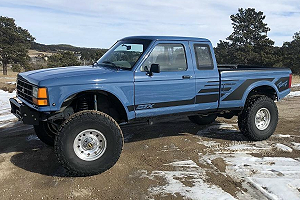Yes, this is a stock hydraulically actuated Ranger clutch. It's the stock Ford self-adjusting pressure plate that is designed to ensure uniform actuation force over the life of the cover. I've replaced lots of clutches over the years, but have never been into one of these. Any ideas about where to source the referenced Ford procedure?
that was what i was getting at years ago. those pictures were actually what i was doing that week..
the pressure plate is always self adjusting. never stops. a hydraulic slave just keeps up with fluid.. you can pull it apart and just replace the disc and it will be just fine.....your clutch reservoir may be overflowing....but there is no other issue other then if you never opened the system it can fight ya stabbing the trans if the piston is out...i always seat it to avoid that.
if there is a malfunction or as often caused a rock gets in the works somehow.. it...the piston in the slave tube can bind/roll a bit from cock in the the bore and introduce air that way...or at any connection point along the way. with oem components cycling the clutch master can allow for air to move up to the reservoir....not all of the air...just excessive air that is pissing you off....but indeed...air can burp in at the slave piston....which is just a fat bastard o ring....and go all the way to the master.
as discussed here....even a prebled system...if there is grease in it can most certainly have some air in it. and will be an irritating bastard....go through it with our 350 z often.
a truly mechanical system otoh...
a mechanical linkage in some cases may get enough slop to come loose or kick a link as the clutch wears....especially a heavy clutch....
that shit dont apply to ford rangers with oem clutches post 88.. there are other slave systems before that that dont necessarily keep up enough as they have a fork...
long way to say what eric said. self adjusting is just liquid doing the same thing it does on your brake system....
which means the only way to adjust it is to remove air. if there is air in it...where it is and how it builds are generally related to time.













